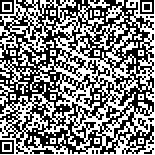| This article has been:Browse 1900Times Download 2444Times |

scan it! |
|
|
| DOI:10.13522/j.cnki.ggps.2019379 |
|
| Effects of Nitrogen Application on Yield, Nitrogen Uptake and Utilization by Summer Maize under Automatically Controlled Pipe-channel Irrigation |
|
LI Yinghao1, ZHANG Zheng1, ZHU Jixiang1, FENG Jian1,WU Keqing1, FENG Zhe2, LIU Xianghua3, WANG Chuntang1*
|
|
1. College of Water Conservancy and Civil Engineering, Shandong agricultural University, Taian 271018, China;2. Qingdao Pingdu Water Conservancy Survey and Design Institute, Qingdao 266700, China;
3. Pingdu Water Conservancy Bureau Agricultural Water Branch, Qingdao 266700, China
|
| Abstract: |
| 【Background】Surface irrigation is the dominant irrigation method in world including China despite its poor irrigation uniformity. Although efforts have been made in many countries to improve surface irrigation technology, progresses are still being made. Automatic pipe-channel irrigation is an irrigation technology that not only reduces irrigation time but also saves water. It can calculate the amount of water required in each field and control the irrigation accuracy along the irrigation furrow to alleviate water leakage loss and improve irrigation uniformity. In China, nitrogen fertilizers contribute 40% to 60% to the increased crop yields in China, but their use efficiency is only 30%, far lower than the international average. Meanwhile, continuous increase in nitrogen fertilizer application has led to detrimental impact on environment, largely due to the inappropriate combination of irrigation and fertilization.【Objective】The purpose of this paper is to experimentally seek an optimal nitrogen application for maize irrigated with automatically controlled pipe-channel irrigation. 【Method】 We compared border irrigation (B) and the automatic pipe-channel irrigation (W). Nitrogen fertilizer used in the border irrigation was 300 kg/hm2, the same as used by local farmers. In the automatically controlling pipe-channel irrigation, we compared three nitrogen fertilizations: 300 kg/hm2 (N1), 225 kg/hm2 (N2) and 150 kg/hm2 (N3), with no nitrogen fertilization as the control (N0). At the tasseling and full ripeness stages we measured the dry matter accumulation in the vegetative organs, while after the flowering stage we measured the nitrogen accumulation, dry matter accumulation, nitrogen translocation, and nitrogen use efficiency.【Result】When nitrogen application was 300 kg/hm2, W irrigation increased grain yield and dry matter accumulation at mature stage by 5.46% and 3.23%, and total nitrogen accumulation and nitrogen use efficiency by 7.79% and 26.69% respectively, compared to B irrigation. Coupled with W irrigation, N1, N2 and N3 nitrogen application increased proportion of dry matter at mature stage compared to the control, but did not show significant difference in grain yield, nitrogen accumulation in the grain and the plant despite the reduced nitrogen application in N2 and N3 Reducing nitrogen application therefore increased nitrogen use efficiency significantly by up to 25.54%. The partial productivity of nitrogen in N3 was significantly higher than that in other treatments. 【Conclusion】Coupling fertilization and automatic pipe-channel irrigation can reduce nitrogen fertilizer application, and for the experiments we conduced, the application rate can be controlled in 225 kg/hm2 to 300 kg/hm2 without scarifying grain yield and quality. |
| Key words: summer maize; automatic pipe-channel irrigation; nitrogen application; nitrogen utilization efficiency |
|
|